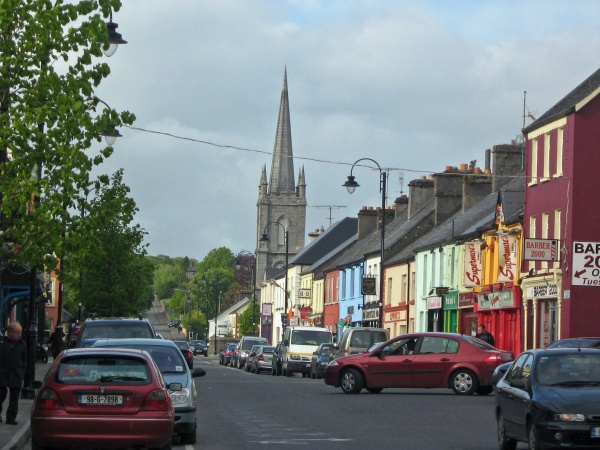The little Mayo town of Claremorris earned itself a footnote in history during World II.
Despite its neutrality, Ireland provided weather reports to the Allied forces for the duration of the war.
Now it just so happens that Claremorris was - and still is - one of the Republic’s eight inland weather observing stations, it’s located about two kilometres from the town centre.
Weather, of which they get plenty of in Co. Mayo you may be sure, has been dutifully recorded at this station since 1943.
A local family, the Vaheys, ran the whole operation until 1996, when the station went automatic and the staff relocated to nearby Knock Airport.
But you’ll be wanting to know about the town’s brush with history.
The Vaheys wouldn’t have known it — in fact few people would have been aware of it - the reason the authorities were particularly keen to get meteorological reports for June 1944.
Weather report forms still exist in Claremorris which show that for the first week in June of that year the weather in the rest of Ireland was improving with an area of high pressure replacing an active low.
This improving situation with reports from Blacksod Lighthouse and Claremorris was the reason that the launch of the invasion of France, the Normandy Landings, went ahead on the June 6, 1944.
Their brush with fate over, the people of Claremorris went back to minding their own business, and the town today remains a tranquil, quiet place, ideal for spending a relaxing weekend or longer.
The town sits at the bottom of a valley with all roads which lead to the town following hills in particular the old Knock road (known as the Knock hill) and Ballyhaunis road.
The town itself is a peaceful town, even though it boasts over two dozen pubs covering — traditional music, sports, cosy inns, pubs diners; everything is covered.

Claremorris is also home to Mc Mahon Park.
Located on the south side of the town, it comes complete with lovely walks, peaceful lake, coarse fishing, gurgling brooks, delightful wooded countryside giving way to bogland which in springtime (just round the corner, folks!) is a riot of colour with flowers.
If fishing is your angle, so to speak, nearby Lough Mask should be high on your list of preferred destinations.
Situated some 10 km away, Mask is a limestone lough of some 22,000 acres.
The lough is famous for its trout fishing, although there’s plenty of coarse fishing available as well. Several businesses in the area will cater for all your angling needs.
Like Claremorris itself, the lough also has its own history — in Co. Mayo, history is never far away.
From the 14th century right up to the 20th century, this area has seen tumultuous events.
Community relations in the area were particularly iffy during the Land Wars of the 19th century, and the proximity of estates managed by Charles Boycott — from whom the English language got a new word — also helped heighten tensions.
Despite this somewhat melancholy history, Lough Mask today is a beautiful amenity, and can provide all your holiday requirements - fishing, water sports, romantic pubs along the waterside.
Of course, if history is a keen interest of yours — or indeed if you just like to look at beautiful old buildings in tranquil surroundings, pay a visit to nearby Ballintubber Abbey.
Ballintubber's history goes back to pre-Christian times.
In days gone by pilgrims from the rest of Ireland would pass through Ballintubber on their way to the Croagh Patrick, Mayo’s holy mountain since pagan times.
When St Patrick brought Christianity to Ireland in c.441AD, he founded a church at Ballintubber.
The present Abbey was founded in 1216 by King Cathal O'Conor, and remains the only church in Ireland founded by an Irish king still in daily use.
If you have an interest in Neolithic court tombs, you could scarcely do better than visit this area.
Around 85 of the 400 plus court-tombs known in Ireland are located in Mayo, with several scattered around Claremorris.
The landscape of Connacht — scarred by millions of years of belligerent weather — is home to Neolithic graves, cairns and dolmens some 5000 years old - some are even older, going back to the time when banshees, monsters and giants roamed the earth.
Mind how you go now!
Mayo, in the ancient province of Connacht, boasts some of Ireland's most evocative scenery - Croagh Patrick, "Quiet Man" country, Clew Bay, Knock Basilica, dramatic seascapes.
But it also has fine old towns like Claremorris, which are near all these grand sights, but can also offer those other precious commodities — a friendly welcome, an unhurried pace of life, and enough pubs and restaurants to provide plenty of craic.

